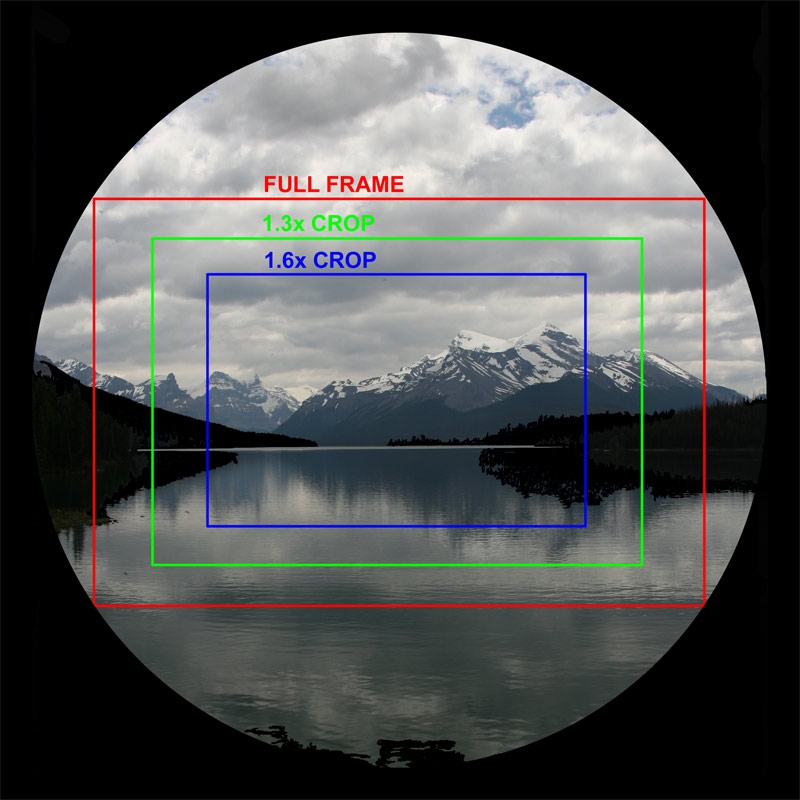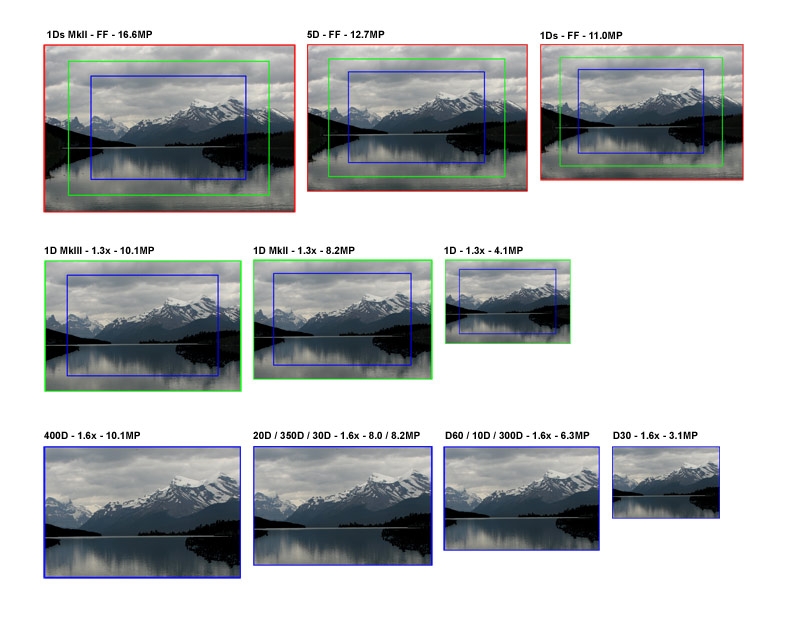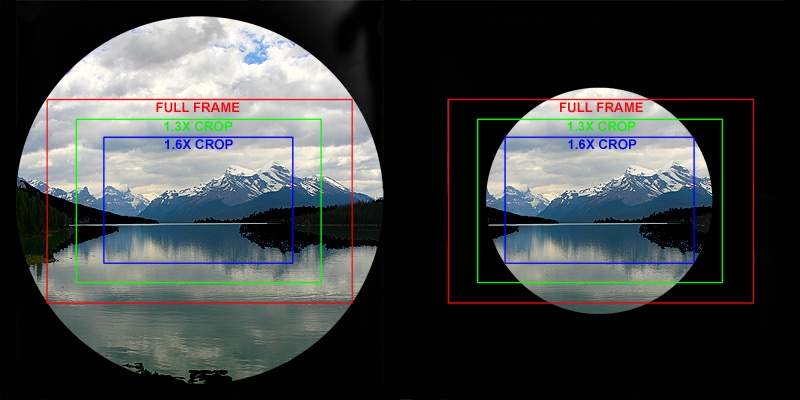- Messages
- 11,513
- Name
- Stewart
- Edit My Images
- Yes
Seeing this thread reminded me of the "crop factor" issue that some people struggle to understand, so I thought it might be helpful to share with you a few visualisations that I made a while ago.
Apologies if this is all obvious: I'm new to TalkPhotography and I haven't yet gauged where most people are on the newbie / clueless / expert scale. Feedback would be very welcome.
Anyway, Visualisation #1 shows a simulation of the view through a lens, and the portion of the picture which is captured by sensors of different sizes. (I've used full frame / 1.3x / 1.6x because I'm a Canon user.) As you can see, crop-factor cameras just capture a smaller portion of the scene than full-frame cameras. Nothing else changes.

This makes it look like crop-factor cameras give you extra "reach" for free: the scene you'd capture with a 200mm lens on a 1.6x camera such as a Canon 350D/400D or 20D/30D/40D is similar to what you'd get with a 320mm lens on a full-frame camera. But that's not the whole story. Another relevant issue is how many pixels you have to play with.
Next, Visualisation #2 shows what you get if you take the same photo with each camera in the Canon range (except the new 40D and 1Ds Mk III, because I made this a couple of months ago), and enlarge it by the same amount.

This is important for people who shoot things like birds. It shows you that the 400D gives you more pixels-per-duck than any of the other cameras here. (Of course that's not the whole story: the more expensive cameras will give you better quality pixels, and better autofocus, and other goodies.) It's also interesting to see, for example, that if you crop the centre out of a 5D image to reproduce what you'd get with a 30D, you end up with fewer pixels and a smaller image than if you'd used a 30D in the first place.
Finally, Visualisation #3 shows (crudely) what those designed-for-digital lenses do. On the left is the image projected by a "traditional" lens like a Canon EF or a Sigma DG: the image circle is large enough to cover a full-frame sensor or a frame of 35mm film. On the right is the same view through a designed-for-digital lens such as a Canon EF-S or a Sigma DC. It's simply a smaller piece of glass, which is why it's cheaper, and you can see why they only work on crop-factor cameras.

I hope that all made sense and that at least some people found it vaguely helpful. Comments and questions welcome.
Apologies if this is all obvious: I'm new to TalkPhotography and I haven't yet gauged where most people are on the newbie / clueless / expert scale. Feedback would be very welcome.
Anyway, Visualisation #1 shows a simulation of the view through a lens, and the portion of the picture which is captured by sensors of different sizes. (I've used full frame / 1.3x / 1.6x because I'm a Canon user.) As you can see, crop-factor cameras just capture a smaller portion of the scene than full-frame cameras. Nothing else changes.

This makes it look like crop-factor cameras give you extra "reach" for free: the scene you'd capture with a 200mm lens on a 1.6x camera such as a Canon 350D/400D or 20D/30D/40D is similar to what you'd get with a 320mm lens on a full-frame camera. But that's not the whole story. Another relevant issue is how many pixels you have to play with.
Next, Visualisation #2 shows what you get if you take the same photo with each camera in the Canon range (except the new 40D and 1Ds Mk III, because I made this a couple of months ago), and enlarge it by the same amount.

This is important for people who shoot things like birds. It shows you that the 400D gives you more pixels-per-duck than any of the other cameras here. (Of course that's not the whole story: the more expensive cameras will give you better quality pixels, and better autofocus, and other goodies.) It's also interesting to see, for example, that if you crop the centre out of a 5D image to reproduce what you'd get with a 30D, you end up with fewer pixels and a smaller image than if you'd used a 30D in the first place.
Finally, Visualisation #3 shows (crudely) what those designed-for-digital lenses do. On the left is the image projected by a "traditional" lens like a Canon EF or a Sigma DG: the image circle is large enough to cover a full-frame sensor or a frame of 35mm film. On the right is the same view through a designed-for-digital lens such as a Canon EF-S or a Sigma DC. It's simply a smaller piece of glass, which is why it's cheaper, and you can see why they only work on crop-factor cameras.

I hope that all made sense and that at least some people found it vaguely helpful. Comments and questions welcome.
Last edited:


 Looks like you put a lot of effort into that and I'm sure it will clear up the confusion between ff and crop sensors for a lot of people. Thanks for sharing it with us
Looks like you put a lot of effort into that and I'm sure it will clear up the confusion between ff and crop sensors for a lot of people. Thanks for sharing it with us 